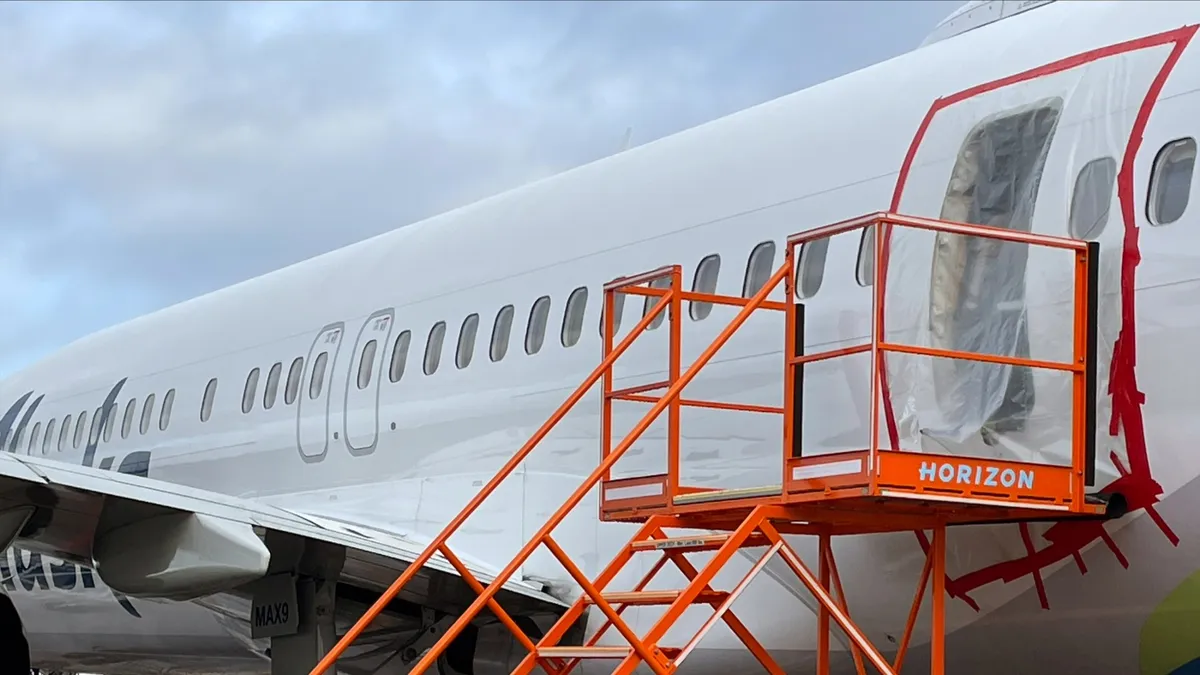
The National Transportation Safety Board (NTSB) has announced that a series of systemic failures led to a midair blowout during a Boeing 737 Max flight last year. Investigators found significant shortcomings in safety procedures at both Boeing and the Federal Aviation Administration (FAA). Fortunately, no fatalities or serious injuries occurred when the door plug panel blew out of an Alaska Airlines flight shortly after takeoff.
NTSB chair Jennifer Homendy commended the airline crew for their adept handling of the situation, ensuring that all 177 passengers onboard were safely returned to Portland International Airport. "This accident never should have happened," said Homendy. "The safety deficiencies that led to this incident should have been evident to both Boeing and the FAA." The January 5, 2024 incident raised significant concerns regarding safety and quality control at the aerospace giant, prompting an in-depth investigation by NTSB members in Washington.
One of the key findings of the investigation was the mystery surrounding the missing bolts. Investigators reported that they still could not determine who reinstalled the door plug panel at Boeing's factory without replacing four critical bolts necessary for securing it. "Even one of those four bolts could have prevented the door plug blowout during Alaska Airlines Flight 1282," NTSB investigators stated during a press conference. These bolts were never recovered, and investigators suspect they may have been discarded.
In October 2023, the NTSB had previously confirmed that these four bolts were missing when the Boeing 737 Max was delivered to Alaska Airlines. The lack of documentation regarding who was responsible for removing and reinstalling the door plug panel complicates accountability. Homendy pointed out that this situation highlights larger issues within Boeing's safety protocols, stating, "Boeing relied on a single point of failure—a human not filing or documenting a record. That was a flaw in the system."
Furthermore, investigators found that Boeing's reliance on inadequately trained workers to perform critical tasks contributed to the incident. The Renton, Washington factory, where the Boeing 737 is produced, experienced a loss of many skilled workers during the COVID-19 pandemic. Of the two dozen workers on the door team, only one had prior experience with removing a door plug panel, and he was on vacation when the incident occurred.
The door plug incident triggered a crisis for Boeing, leading to significant leadership changes. Former CEO Dave Calhoun announced his resignation by the end of that year, and the company replaced top management at its Renton factory. Boeing also committed to implementing more rigorous training programs for new employees. Current CEO Kelly Ortberg expressed that the company has only recently returned to the pre-incident production rate of 38 jets per month. "We at Boeing regret this accident and continue to work on strengthening safety and quality across our operations," the company stated. They also pledged to review the final report and implement any suggested improvements.
The Alaska Airlines incident prompted the FAA to enhance its oversight of the Renton factory, temporarily capping production at 38 aircraft per month. The FAA emphasized that it has fundamentally restructured its approach to overseeing Boeing since the accident, stating, "We will continue this aggressive oversight to ensure Boeing fixes its systemic production-quality issues." The agency has made it clear that the production cap will remain in place until they are confident in the company's ability to maintain safety and quality in manufacturing.
While both Boeing and the FAA have made strides in improving their safety processes, NTSB chair Homendy acknowledged that more work remains. She particularly praised Ortberg for renewing the focus on safety since taking over as CEO last summer. The incident serves as a significant setback for Boeing, which is still working to regain trust with regulators and the flying public after the tragic crashes of two 737 Max jets in 2018 and 2019 that resulted in 346 fatalities.
In a recent development, the Department of Justice indicated to a federal judge that it has reached an agreement with Boeing to dismiss a criminal case regarding those earlier crashes, despite pushback from the families of some victims. This situation highlights the ongoing legal complexities surrounding accountability for Boeing.
Fortunately, no one was seriously injured during the Alaska Airlines flight incident. The door plug panel blew out approximately six minutes after takeoff, allowing the aircraft to return for an emergency landing in Portland. Homendy remarked, "Had this incident occurred at cruising altitude of 35,000 feet, the outcome could have been drastically different. It's nothing short of a miracle that no one died."